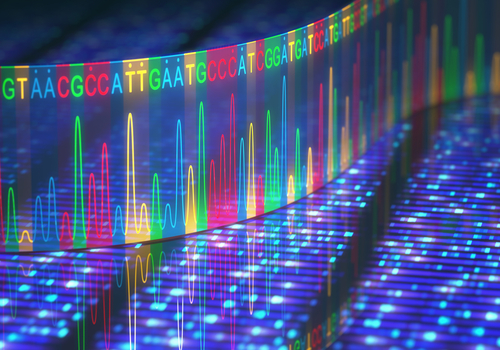2 New DDC Gene Mutations, Identified in African American Siblings, Described in Case Report

Two previously unknown gene mutations that cause aromatic L-amino acid decarboxylase (AADC) deficiency have been identified in two siblings whose cases were described in a new report.
The mutations were found in the DDC gene in the African American sisters.
Titled “Case report: discovery of 2 gene variants for aromatic L-amino acid decarboxylase deficiency in 2 African American siblings,” the report was published in BMC Neurology.
AADC deficiency is caused by mutations in the gene DDC, which encodes the AADC enzyme, which is important in the brain and nervous system. The enzyme takes part in the pathway that produces dopamine and serotonin, chemical messengers that transmit signals between nerve cells.
Mutations in the gene cause the enzyme to not work properly, ultimately leading to the disease in patients.
The new case report describes two female African American siblings who were diagnosed with AADC deficiency.
The siblings’ parents first noticed developmental delay in the older girl at about 6 months of age. At 7 months, the child also exhibited abnormally slow movement, uncontrolled muscle contractions, and involuntary movements of the eyes. These persisted; by age 3, the child was unable to sit unassisted, crawl, or walk, and had limited speech as well as feeding problems.
At first, seizure disorders were suspected, but electroencephalograms (EEGs) — tests that detect electrical activity in the brain — did not show seizure activity.
“However, there was abnormal [EEG] activity that was suggestive of a metabolic and structural [cause of disease],” the researchers said.
An analysis of the child’s urine revealed abnormally high levels of vanillactic acid, vanilpyruvic acid, and N-acetylvanilalanine. Those findings were “a pattern suggestive of AADC deficiency,” according to the investigators.
Indeed, analysis of AADC enzyme activity in the girl’s blood revealed abnormally low activity: 2.13 pmol/min/mL, where the normal range is 36-129 pmol/min/mL.
Genetic testing revealed two variants in the DDC gene: c.48C > A (p.Tyr16Ter) and c.116G > C (p.Arg39Pro). The first refers to a change at the level of DNA, while the second is linked to the corresponding protein change.
Specifically, “c.116G > C” means that, at the 116th nucleic acid in the DDC gene, there is a C — or cysteine — where there is typically a G, or guanine. This causes a substitution of a proline, or an imino acid, as the 39th amino acid in the protein chain, where there is typically an arginine.
“As far as we are aware, these variants have not been previously reported in association with AADC deficiency,” the researchers said.
The younger sibling described in the report followed a similar clinical course to her sister. At 6 months, the child was unable to hold a bottle or sit unassisted, and examinations at age 1 showed similar eye and muscle-related abnormalities. Genetic testing revealed these same two DDC variants in the younger sibling.
Both siblings have been started on occupational, physical, speech, and feeding therapies to help manage their symptoms. The girls also have been given Vitamin B6, a first-line therapy for AADC.
However, no clinical improvement has been observed.
“In this case report, we described the clinical presentation and diagnosis of 2 previously unknown patients with the rare neurometabolic disorder of AADC deficiency and confirmed the presence of 2 DDC gene variants not previously associated with this disorder,” the team concluded.




